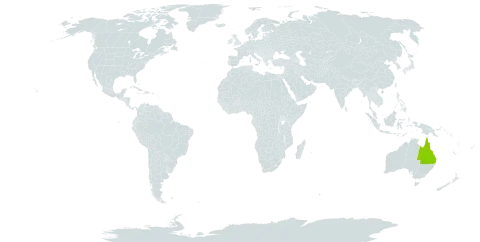Shrub to 4 m high, viscid on most parts; young branchlets with a sparse to moderately dense indumentum of stellate hairs, glabrescent. Leaves alternate, linear, 19–42 mm long, 1.2–3.1 mm wide; base obtuse; margin recurved or sometimes revolute in dried state; apex straight, acute or obtuse to rounded, apiculate; adaxial surface sparsely stellate-pubescent, glabrescent, sparsely tuberculate. Inflorescences sessile or on peduncles 4–8 mm long. Male flowers: androecium 3.5–5 mm long; stamens 55–70. Female flowers on pedicels 2.5–3.2 mm long; calyx lobes oblong-elliptic, 3.8–6.4 mm long, glabrous abaxially, with margins entire; ovary densely stellate-pubescent. Fruit narrowly ellipsoid, 9–10.3 mm long, densely stellate-pubescent, 1-seeded; persistent calyx lobes more than half the fruit length.
